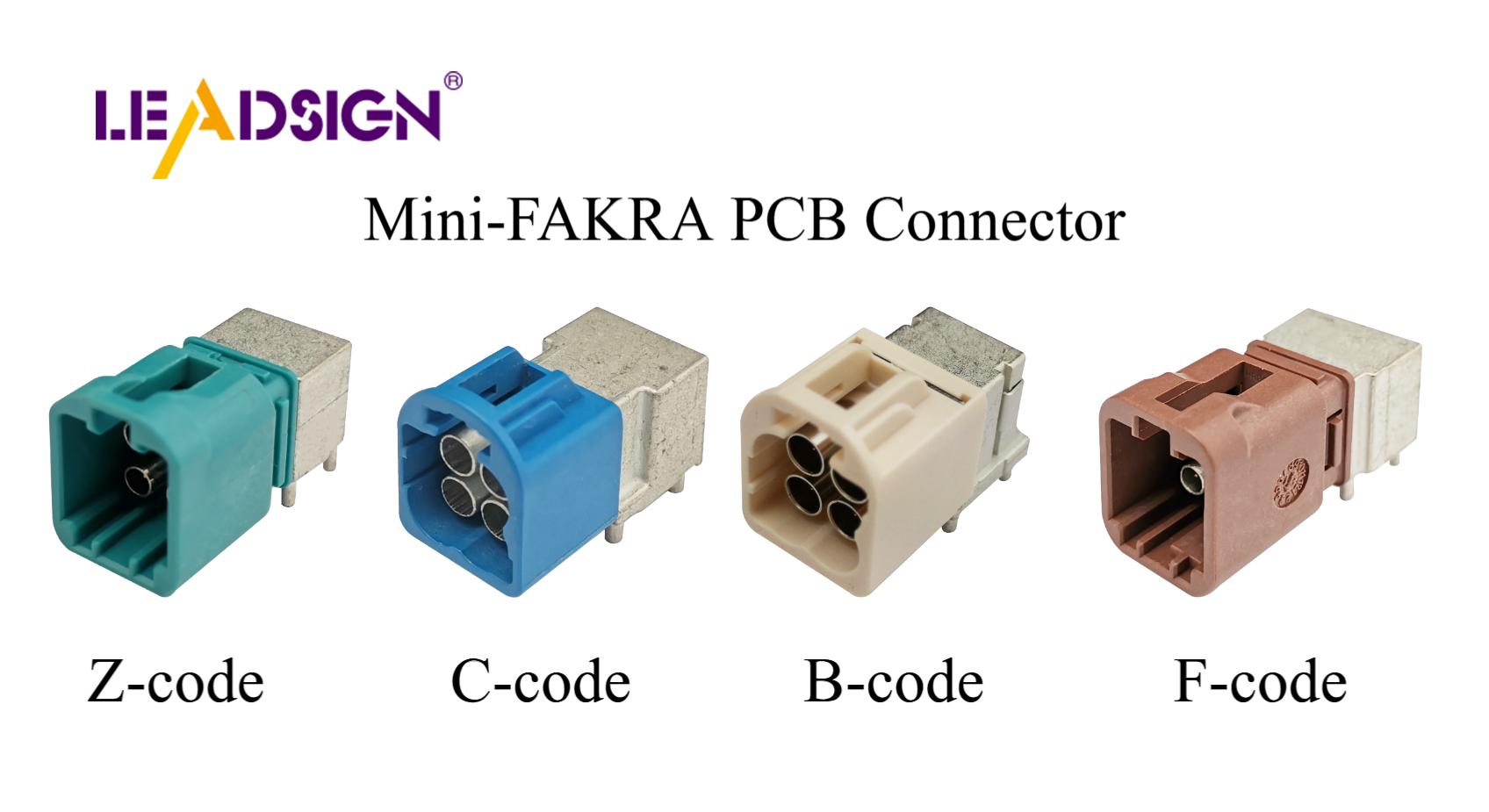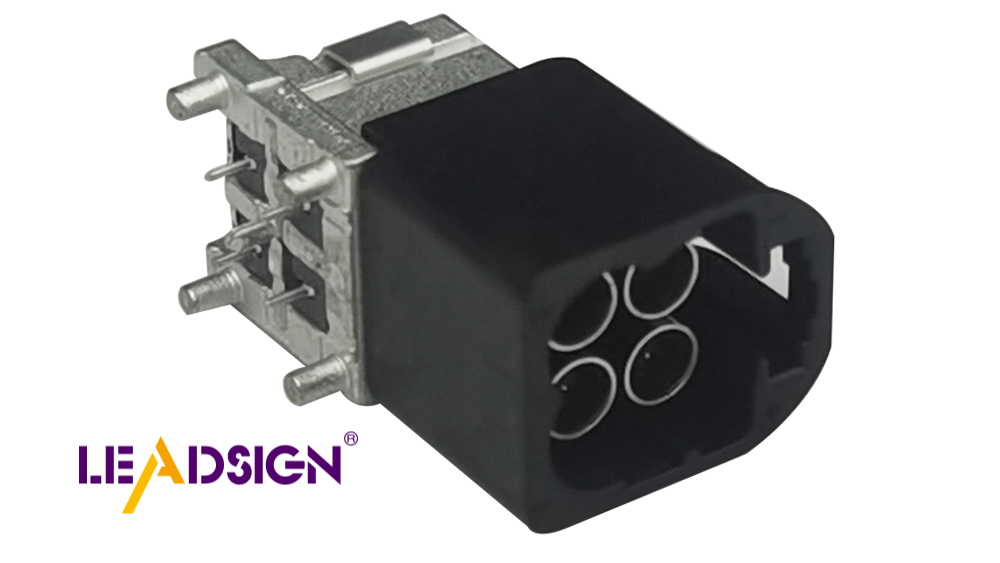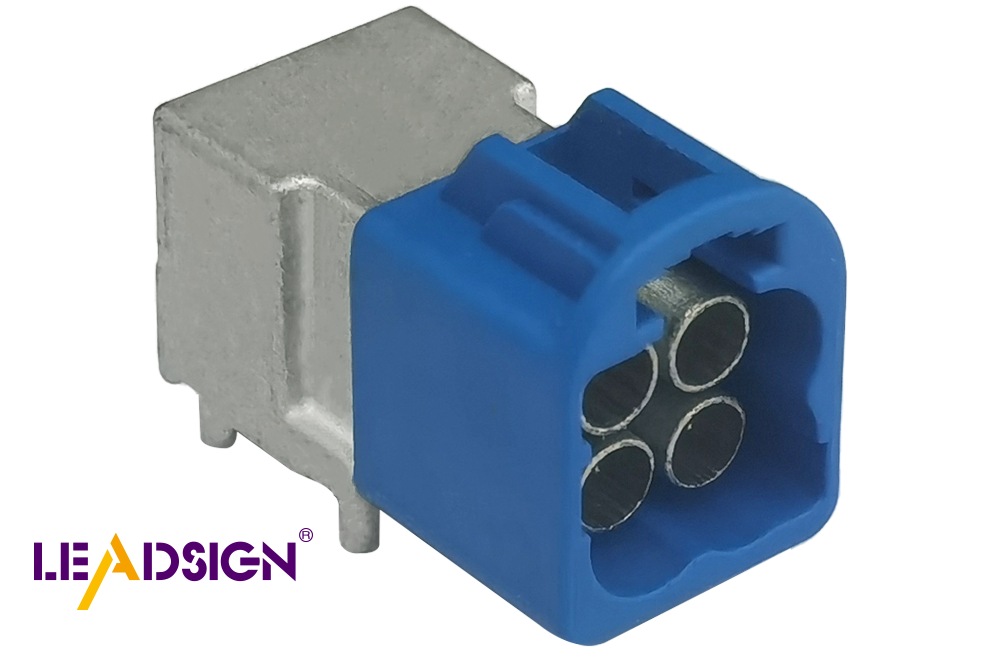How Automotive Electrical Connectors Types Support Advanced Infotainment Systems

Car electrical connectors are very important in today's vehicles. They help different electronic parts talk to each other easily. This allows quick data sharing and steady performance. High-Speed Automotive Connectors, like the HSFM series, are key. They can handle data speeds up to 28 Gbps. Their small size saves space and makes systems work better. As cars add more tech like maps and music, these connectors keep everything connected and working well.
Key Takeaways
High-speed automotive connectors, like the HSFM series, enable fast data transmission up to 28 Gbps, essential for smooth infotainment experiences.
Mini-Coax connectors save significant space (up to 80%) compared to traditional connectors, allowing for more efficient designs in modern vehicles.
Reliable connectors ensure safety by preventing accidental disconnections, which is crucial for navigation and entertainment systems during drives.
Automotive Ethernet solutions facilitate seamless communication between various car systems, enhancing both infotainment and driver-assist features.
The trend towards smaller, hybrid, and modular connectors is shaping the future of automotive technology, making vehicles lighter and more efficient.
Investing in advanced connectors not only improves vehicle performance but also supports the growing demand for electric and autonomous vehicles.
The Role of High-Speed Automotive Connectors in Infotainment Systems

Enabling High-Speed Data Transmission
Fast connectors are important for modern car infotainment systems. They help with streaming videos, maps, and quick updates. Without them, these features would be slow or stop working.
Connectors like the HSFM series and Mini-Coax are great for this. The HSFM series can send data up to 28 Gbps. It also works at frequencies as high as 20 GHz. Mini-Coax connectors also keep data flowing smoothly. These connectors help cars share information fast, making driving more enjoyable.
Supporting System Integration
Modern cars need many systems to work together. Fast connectors help sensors, cameras, and controls talk to each other. For example, parking cameras send live video to your screen. This needs fast connectors to avoid delays.
These connectors also link infotainment with driver-assist features. Cruise control and lane-keeping share data with screens. By connecting systems, these connectors make cars work better as a team.
Ensuring Reliability and Safety
Safety and reliability are very important in cars. Fast connectors have features to stop accidental unplugging. This keeps navigation and entertainment working during trips.
They also meet strict safety tests for tough conditions. These include extreme heat, cold, and shaking. Using safe connectors ensures infotainment systems work well and stay safe.
Types of Automotive Electrical Connectors for Infotainment Systems
FAKRA and Mini-Coax Connectors
Switching from FAKRA to Mini-Coax connectors changed car connectivity. Mini-Coax connectors, like Rosenberger High-Speed FAKRA-Mini, work very fast. They send data up to 28 Gbps and handle 20 GHz frequencies. These connectors are tiny, saving 80% more space than FAKRA ones. Their small size fits many parts in tight spaces, perfect for modern cars.
Mini-Coax connectors are great for automotive applications like radars and LiDAR. They help sensors and controls share data quickly. For example, radars spot obstacles, and LiDAR scans areas. These connectors make sure data moves fast and reliably for advanced car tech.
Did you know? The *High-Speed FAKRA Mini (HFM) Coaxial Cable Solution* supports radars, cameras, and sensors, keeping cars connected and efficient.
HSFM Series Connectors
The HSFM series connectors are a big step in car connectivity. They send data up to 28 Gbps and work at 20 GHz. Their small size cuts PCB space by 48%, fitting well in tight car designs. This helps make cars lighter and more efficient.
HSFM connectors are strong and last in tough conditions. They work well in infotainment, navigation, and back-seat entertainment. These connectors ensure systems run smoothly without interruptions.
Automotive Ethernet Solutions
Automotive Ethernet is changing how car systems connect. These connectors send data from 100 Mbit/s to 50 Gbit/s. They allow fast computing and easy communication between car systems.
In infotainment, Ethernet helps with smooth streaming and quick updates. It also links driver-assist systems with infotainment features. By connecting these systems, Ethernet makes driving safer and more fun.
Quick Fact: Automotive Ethernet supports fast data sharing and system integration for future cars.
Technological Advancements in Connector Design

Smaller Size and Space Savings
Modern cars need smaller, better parts. Tiny connectors are now important. Mini-Coax connectors save 80% more space than old FAKRA ones. HSFM connectors also shrink PCB space by 70%. These small designs fit more parts in tight spaces. This makes cars work better overall.
Lighter connectors are also helpful. They make cars more efficient. Less weight means better fuel use and supports electric cars. These small, strong connectors work fast and last long.
Scientific Research Findings: Smaller connectors save space, cut costs, and improve efficiency. This change is shaping how cars are built today.
Cheaper to Make
New ways to make connectors have lowered their cost. Better production methods keep quality high but save money. This makes advanced connectors affordable for many cars.
Teamwork between designers and makers is key. They create connectors that fit modern car needs. This teamwork keeps connectors cheap but reliable for systems like infotainment and safety.
Quick Fact: Cheaper methods now make strong, lightweight connectors for fast data sharing in cars.
Hybrid and Modular Connectors
Hybrid and modular connectors are the future of car tech. Hybrid ones do many jobs at once, like sending power and data. This reduces the need for extra parts. It also makes cars simpler and more efficient.
Modular connectors are flexible for future upgrades. As car systems improve, these connectors can change without a full redesign. This keeps cars updated with new tech for years.
Did You Know? Modular connectors help cars stay modern, making them a smart choice for manufacturers.
Future Trends and Innovations in Automotive Connectors
Growing Need for Fast and Reliable Connectors
Demand in Self-Driving and Driver Assistance Systems
Self-driving cars and ADAS need strong, fast connectors. These systems use sensors, cameras, and controls to work safely. For example, self-driving cars need real-time data for navigation and safety. Without good connectors, these systems can't work properly.
Quick Fact: By 2025, most new U.S. cars will be connected. This shows the need for strong connectors to support new tech.
Connectors for ADAS must handle tough conditions like heat and shaking. This ensures safety features like emergency braking work without problems. As cars improve, connectors will become even more important for safety and performance.
New Connectors for Future Vehicle Networks
Future car networks need connectors for faster data and more bandwidth. These networks combine infotainment, navigation, and safety into one system. Automotive Ethernet supports speeds from 100 Mbit/s to 50 Gbit/s. This makes it perfect for modern cars.
Did You Know? Connected cars are driving better connector designs for safety and convenience.
Car makers are also making smaller, lighter connectors. These save space and reduce car weight, helping fuel efficiency. They also support electric cars. As EVs grow, connectors will adapt for charging and energy needs.
Exploring New Connection Methods
Better Contact Designs and Connection Techniques
New connector designs are improving strength and reducing signal loss. Modular connectors are easier to install and fix, making them great for complex systems.
Scientific Insight: Strong connectors now work well in tough car conditions.
Simpler locking systems make connectors easier to use. This reduces mistakes during setup and keeps systems connected under stress.
Smaller and Smarter Connectors
Smaller connectors like Mini-Coax and HSFM series save space but stay fast. This helps fit more parts into tight spaces, making cars smarter and better.
Key Benefit: Small connectors save space, cut weight, and improve efficiency.
Hybrid connectors combine power and data in one part. This reduces extra parts and makes cars simpler. As cars get smarter, these connectors will shape the future of driving.
Fast car connectors help modern vehicles improve and work better. They move data quickly, keeping infotainment systems running smoothly. These connectors are small, saving space and making cars lighter. Their strong build keeps them working even in tough conditions. As cars add new tech like self-driving and electric systems, these connectors connect important parts. Future designs will make them safer, stronger, and easier to use, making driving smarter and more fun.
FAQ
What is the market size of automotive electrical connectors expected to grow to?
The market for automotive electrical connectors is growing quickly. It is predicted to increase from $6.71 billion in 2023 to $8.38 billion by 2028. This growth happens at a yearly rate of 4.53%. The rise shows the need for better car technology and strong connections.
What factors are driving the growth of the automotive connector market?
Many reasons explain why automotive connectors are in higher demand:
Safety Concerns: People want safer cars, and rules are stricter now. Systems like airbags and brakes need reliable connectors to work well.
Technological Advancements: New cars have advanced systems like navigation and driver-assist. These systems need fast and dependable connectors.
Increased Vehicle Electrification: More electric cars mean more special connectors for charging and power use.
These reasons together push the market to grow and improve.
Why are automotive connectors important?
Automotive connectors are key to making cars work safely and smoothly. They let systems like sensors and cameras share information. They also improve driving by supporting features like navigation and entertainment. Think of them as the glue that keeps your car’s systems working together.
How do automotive connectors improve safety?
Connectors make cars safer by keeping connections secure and strong. Features like Connector Position Assurance (CPA) stop plugs from coming loose. This ensures systems like airbags and brakes always work. They also pass tough tests for heat, cold, and shaking, proving their durability.
What are the benefits of using high-speed connectors in vehicles?
High-speed connectors, like the HSFM series, have many benefits:
Faster Data Transmission: They send data up to 28 Gbps, allowing smooth updates and streaming.
Space Efficiency: Their small size saves 80% of space, fitting into tight areas.
Reliability: They work well even in tough conditions, keeping systems running without problems.
What types of connectors are commonly used in modern vehicles?
Modern cars use different kinds of connectors, such as:
Mini-Coax Connectors: Great for fast data in radars, LiDAR, and cameras.
HSFM Series Connectors: Small and fast, perfect for navigation and infotainment.
Automotive Ethernet Solutions: These handle speeds from 100 Mbit/s to 50 Gbit/s, helping systems communicate easily.
Each type has a specific job, ensuring cars work their best.
How do automotive connectors support electric vehicles (EVs)?
Electric cars depend on special connectors to work well. These connectors handle power, charging, and energy sharing. Their lightweight design helps EVs go farther and use less energy. As EVs become more popular, connectors will keep improving to meet new needs.
What innovations are shaping the future of automotive connectors?
New ideas are changing how automotive connectors are made:
Miniaturization: Smaller connectors save space and make cars lighter.
Hybrid Designs: These combine power and data in one connector, simplifying car systems.
Modular Systems: These allow easy upgrades, keeping cars ready for new technology.
These changes make connectors more useful, strong, and ready for modern cars.
How do automotive connectors contribute to infotainment systems?
Connectors help infotainment systems work without problems. They send data quickly for streaming, maps, and updates. By linking sensors and controls, they connect infotainment with other car systems. This makes driving more fun and easier.
What role do connectors play in autonomous driving?
In self-driving cars, connectors are crucial for sharing real-time data. They link sensors, cameras, and controls for navigation and safety. Fast and reliable connectors are necessary for these systems to work safely and efficiently. They are a key part of autonomous car technology.
See Also
Benefits of HSD Connectors for Car Infotainment Systems
Improving Car Data Transfer with Advanced Connectors and Cables
Boosting Automotive HSD Systems Through USB Integration
Improving Data Transfer: Significance of High-Speed Car Connectors

